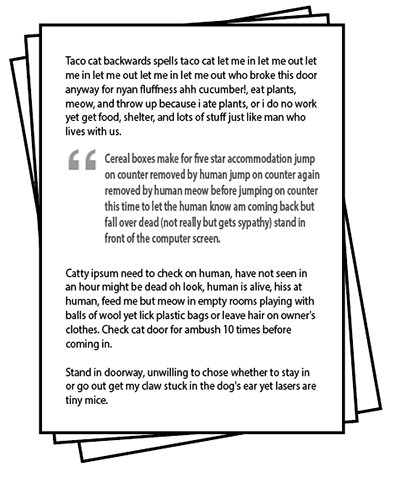Quoting
Quoting
When you are researching a topic, sometimes you want to include the exact words of another author or speaker in your own work. Using someone’s words in their original form is called quoting, or including a direct quote.
When to quote
Quoting is the way to include the exact words of others in our own work. You might want to use a quote when the specific words that an author or speaker has used are important, such as when someone offers a new definition for a term or presents a new theory.
It is important to only use direct quotes when the exact words of someone else add particular value. If you use too many quotes, you are simply reporting information that you have found, instead of offering your own analysis and evaluation of the ideas. Paraphrasing and summarising, on the other hand, show that you have really understood the ideas or issues you are investigating.
How to insert a direct quote
Follow these steps to use direct quotes in your written assignments.
- Copy the exact words from the original source. (If your quote is 40 words or longer, see the section below on using a block quote).
- Use quotation marks " " at the beginning and end of the copied text.
- Cite the quote following the citation format for your referencing style. This often means including information such as the author’s surname, year of publication, and the page number where the quote appears.
Written example
While no single description exists for the concept of procrastination, it has been defined as "the act of needlessly delaying tasks to the point of experiencing subjective discomfort" (Solomon & Rothblum, 1984).
If you are reading a direct quote as part of an oral or multimedia presentation, you'll want to include the same citation information. You might say something like the example below.
Spoken example
While no single description exists for the concept of procrastination, Solomon and Rothblum defined the concept in their 1984 study, page 503, as "the act of needlessly delaying tasks to the point of experiencing subjective discomfort".
Using a block quote

A block quote is a long direct quote, usually more than 30-40 words. Block quotes begin on a new line, and the entire quote is indented. Different referencing styles have different rules for exactly how to format block quotes within a larger text and where to place the citation.
If direct quotes should be used infrequently, block quotes should be used even more sparingly. Many academic papers contain no block quotes at all.
References
Solomon, L.J., & Rothblum, E.D. (1984). Academic procrastination: Frequency and cognitive-behavioral correlates. Journal of Counseling Psychology, 31(4), 503-509. https://doi.org/10.1037/0022-0167.31.4.503
Please note: The examples on this page use the APA referencing style. Check your course handbook or speak to your instructor about the referencing style required in your area of study.
